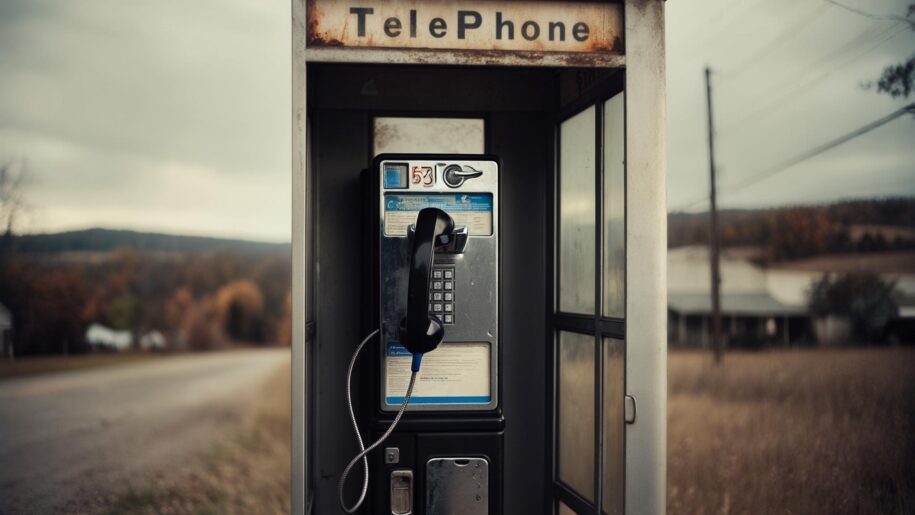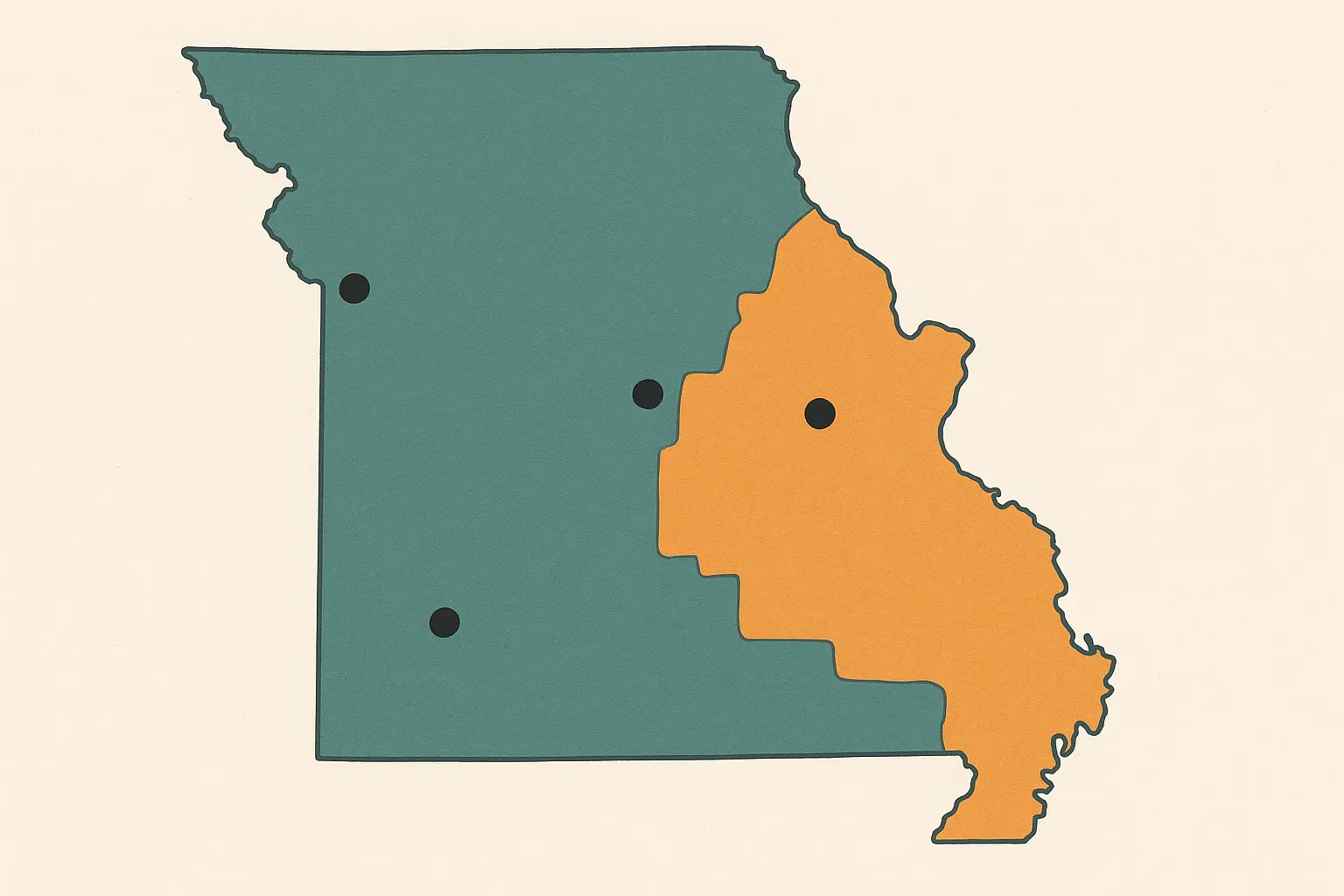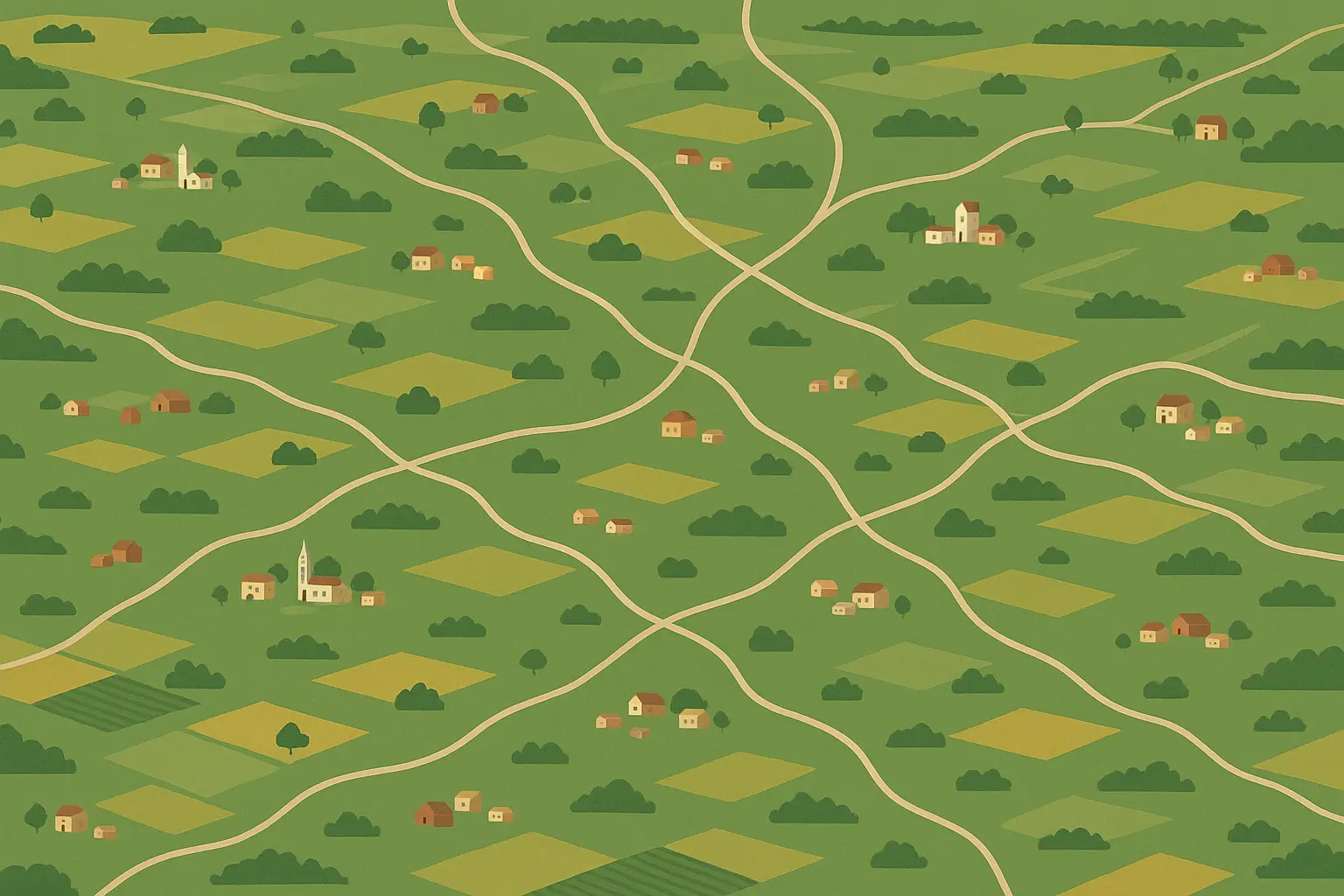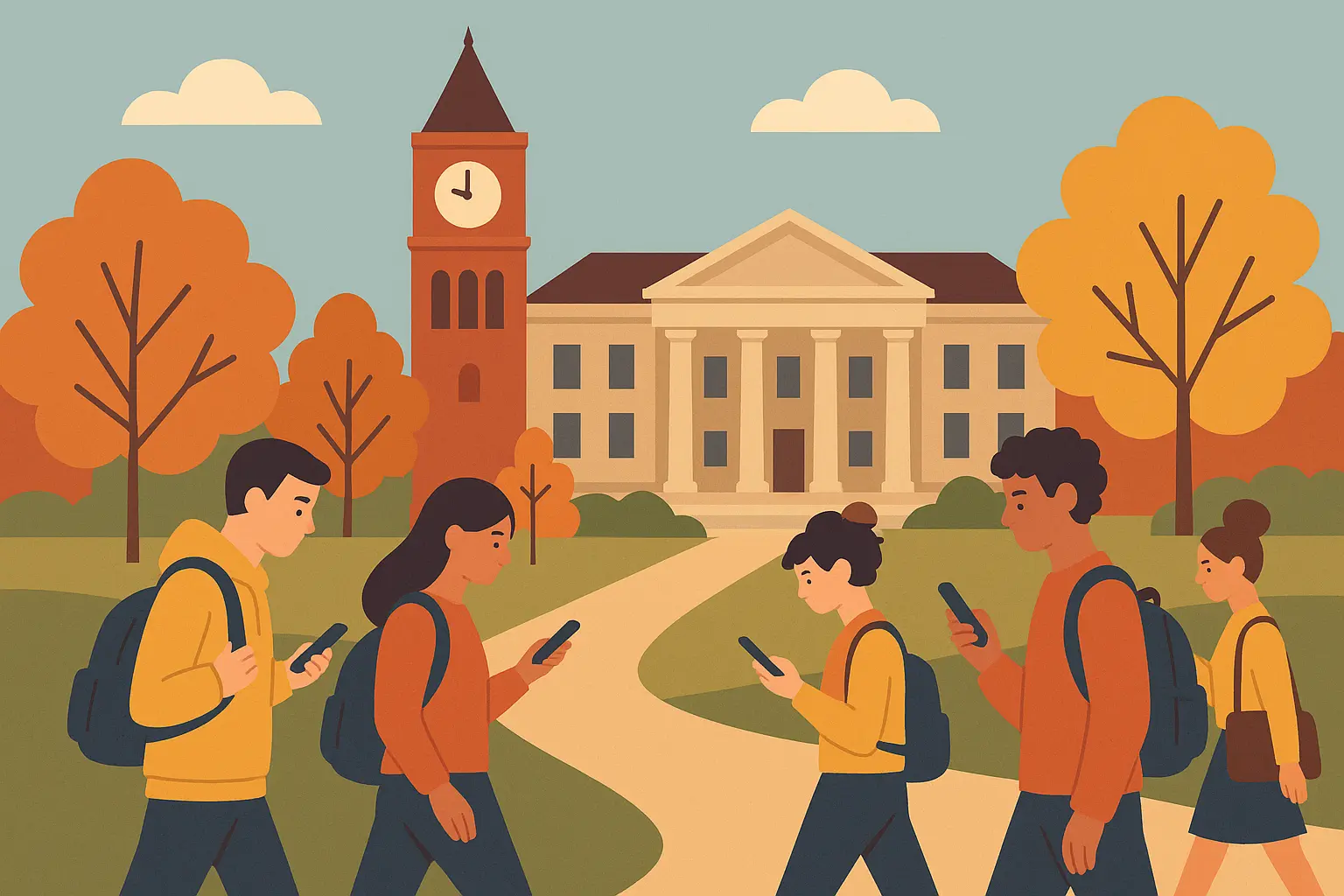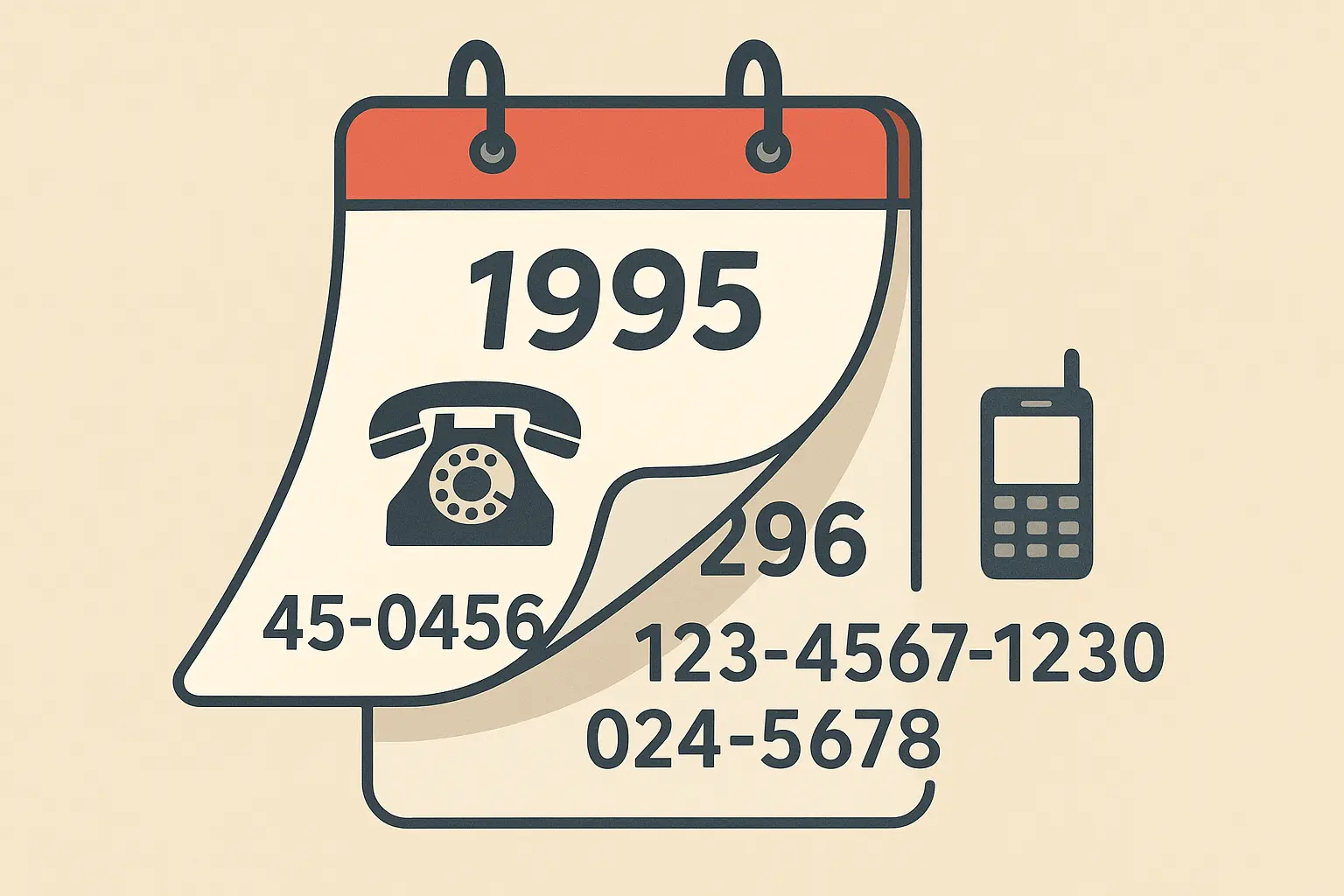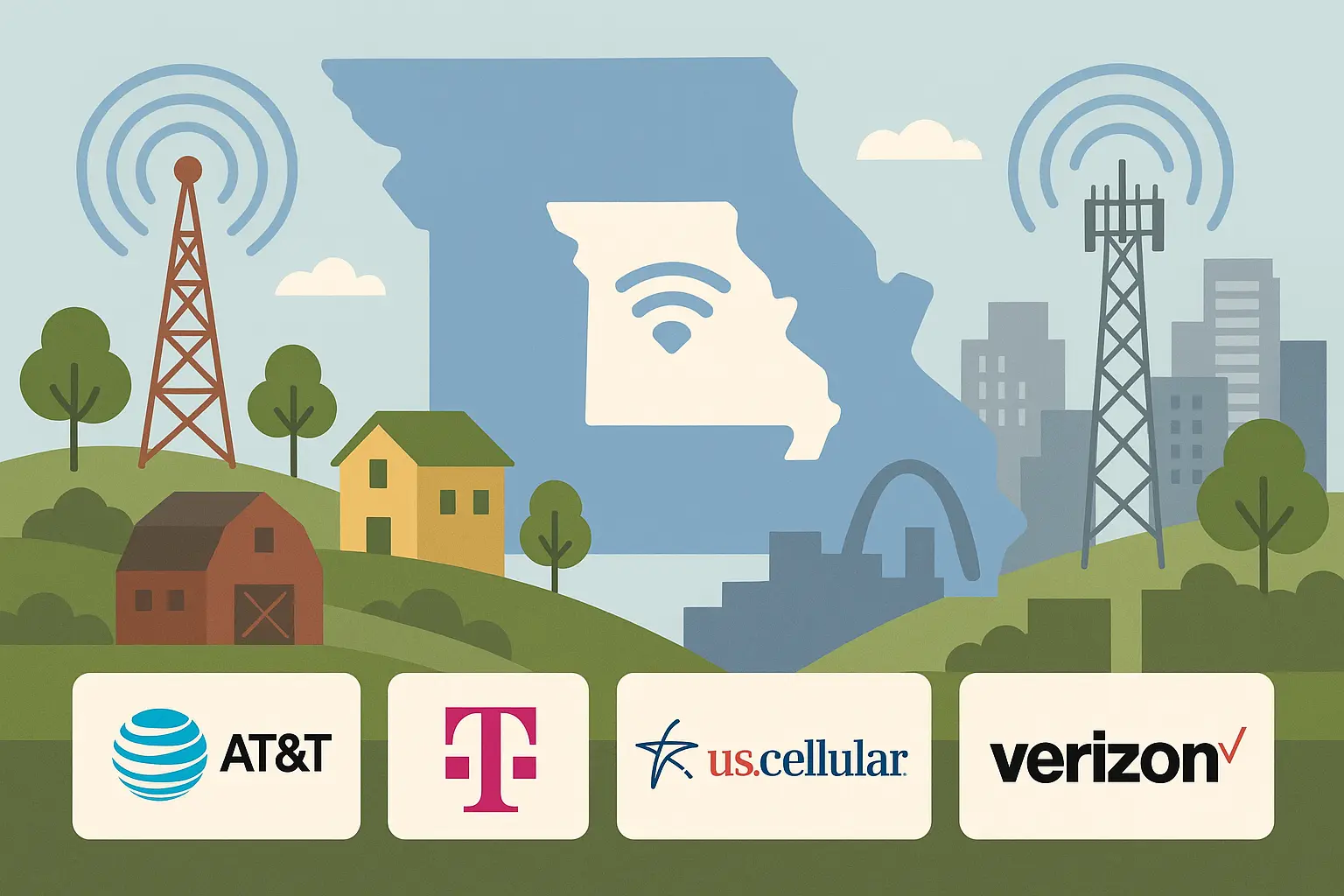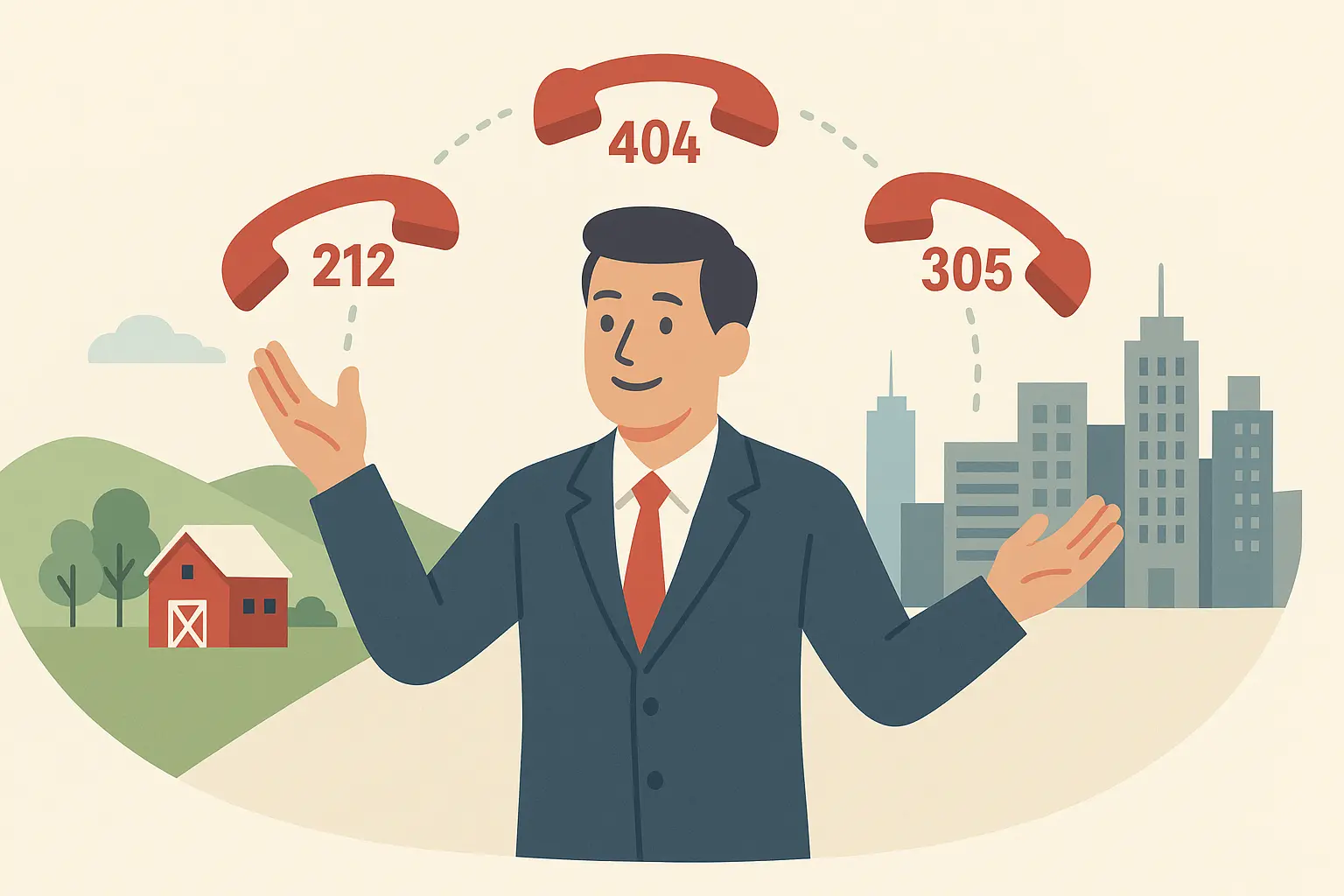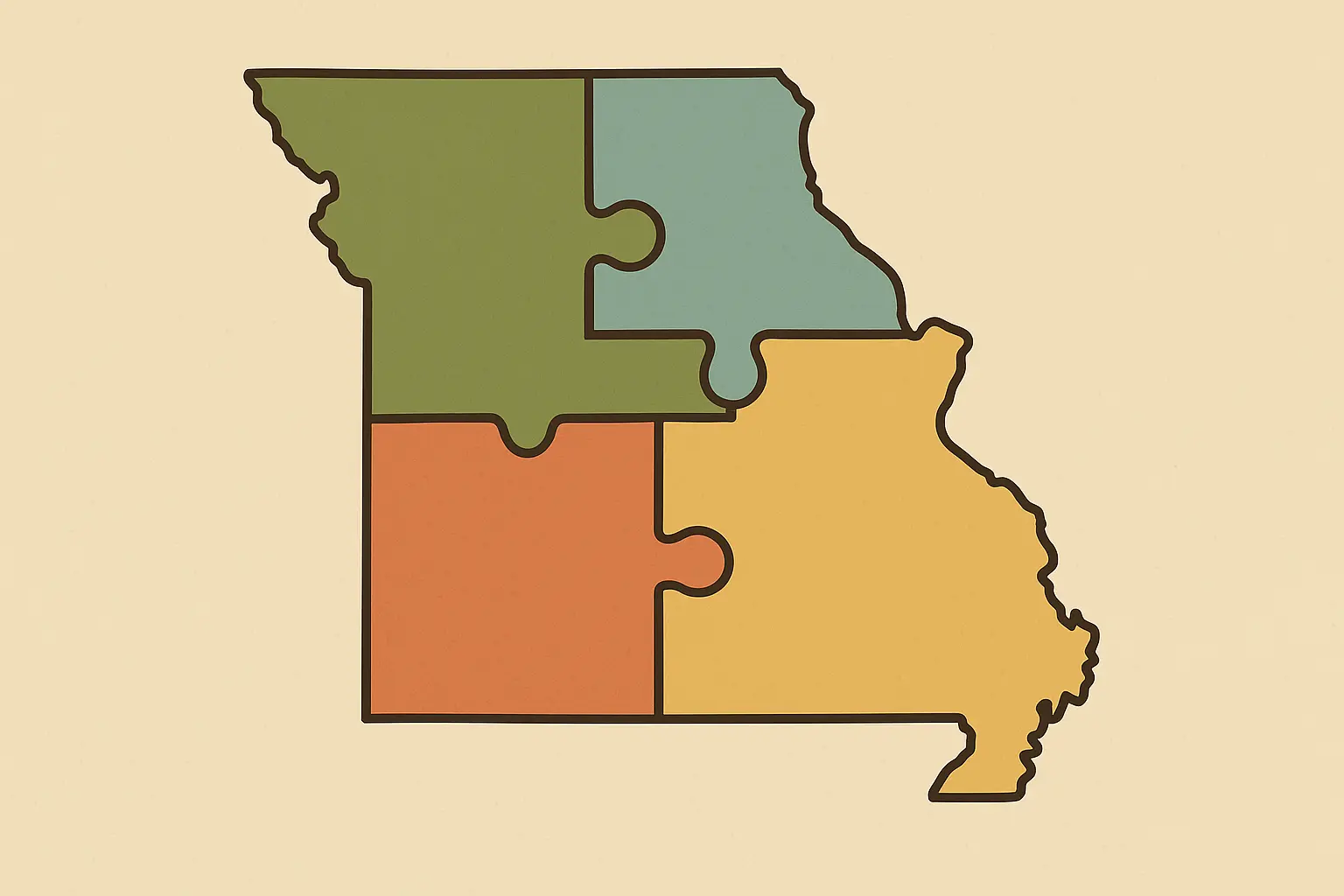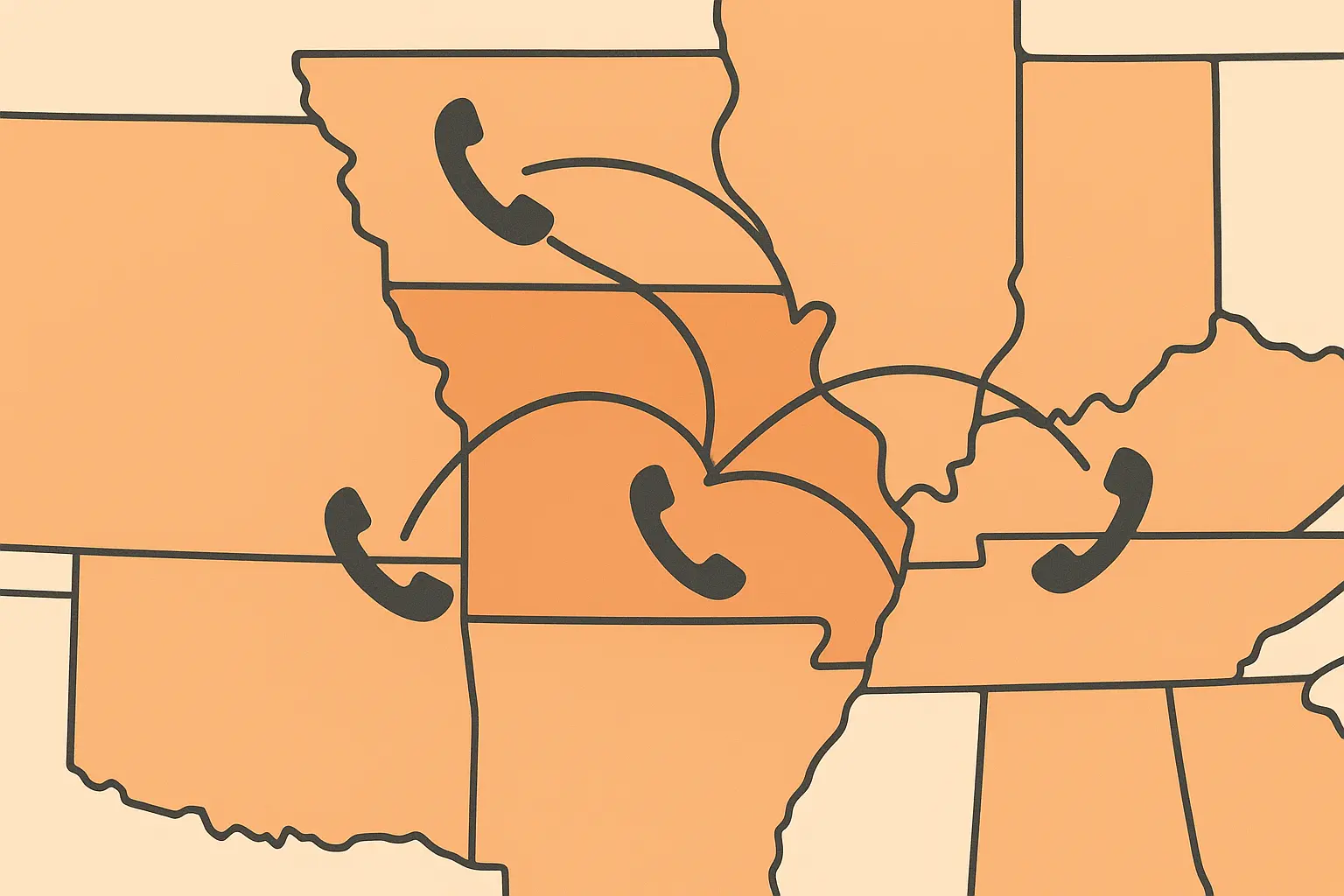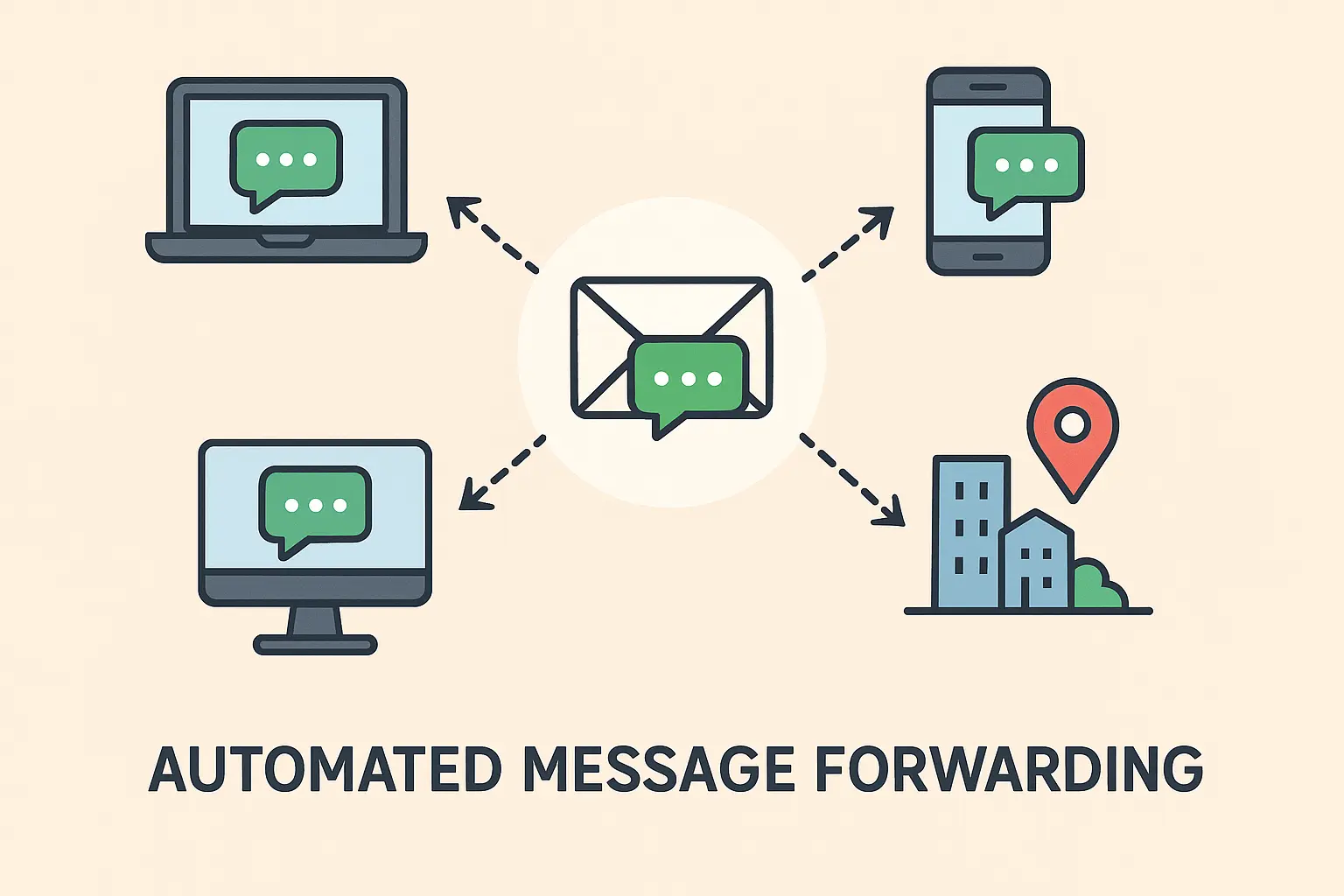If you’ve ever wondered why your Missouri phone number starts with 573, you’re not alone. This area code covers a huge chunk of the state – from Columbia’s college town energy to rural farming communities where your nearest neighbor might be miles away. With over 1.2 million residents spread across 50 counties, it’s one of Missouri’s most interesting and challenging regions for communication.
Table of Contents
Table of Contents
-
What Makes 573 Different from Other Missouri Regions
-
How 573 Came to Be: The Real Story Behind the Split
-
Why Getting a 573 Number Isn’t Straightforward
-
The Real Challenges of Living and Working in 573 Territory
-
How 573 Fits Into Missouri’s Complete Area Code System
-
Smart Communication Solutions for 573 Users
TL;DR
The 573 area code covers a massive chunk of central and southeastern Missouri – 50 counties including Columbia, Jefferson City, and Cape Girardeau. Created in 1996 when the original 314 area code couldn’t handle demand anymore, 573 serves one of the most geographically expansive regions in Missouri.
Unlike urban-focused area codes, 573 covers tons of rural territory with low population density, creating unique communication challenges. Mobile number portability means you’ll find people with 314, 816, and out-of-state numbers living right in 573 territory.
The University of Missouri in Columbia creates seasonal spikes in phone number demand that affect the entire region. Businesses operating across 573’s vast territory need flexible communication solutions to handle multiple area codes and spotty rural coverage.
What Makes 573 Different from Other Missouri Regions
Most area codes stick to one major city and its suburbs. But 573? It’s Missouri’s oddball – covering everything from the state capital to tiny farming towns where everyone knows each other.
The numbers tell an interesting story: about 614,087 men and 607,697 women call this area home, creating 101.05 males per 100 females according to ZipAtlas demographic data. That’s a lot of people spread across 50 counties, and it creates some weird situations you won’t find in places like St. Louis or Kansas City.
The 573 region encompasses everything from bustling college towns to farming communities where cell towers are few and far between. We’re dealing with a region that serves the state capital, major universities, and rural areas all at once.
It’s Bigger Than You Think
When people see 573 on a map, they’re usually surprised. This isn’t your typical city-centered area code. It stretches from the Iowa border all the way down to Arkansas and Tennessee. We’re talking about one of the largest area codes in Missouri by sheer size.
When you look at a 573 area code map, you’ll see something that doesn’t make sense at first glance. This isn’t your typical metropolitan area code that hugs a major city. Instead, it serves everything from tiny farming communities to mid-sized cities.
The Major Players That Define the Region
Columbia anchors the region as its largest city and home to the University of Missouri, while Jefferson City serves as Missouri’s state capital. Cape Girardeau provides a southeastern hub, and historic Hannibal adds cultural significance. But here’s what locals know that outsiders don’t – hundreds of smaller towns and rural areas make up the majority of the territory.
Here’s what makes it tricky for businesses: imagine trying to serve customers in a college town, the state government, river commerce, and dozens of farming communities. Each place has totally different needs and internet connectivity. When managing communications across such diverse territories, understanding how to forward text messages to an email address becomes crucial for businesses serving multiple communities with varying connectivity levels.
Where 573 Territory Actually Ends (It’s More Complex Than You’d Think)
The 573 boundaries create an interesting puzzle, bordering the St. Louis metro area codes 314 and 636, Kansas City’s 816 region, and extending all the way to state lines with Arkansas, Tennessee, Kentucky, Illinois, and Iowa. These borders aren’t always intuitive and can surprise people trying to figure out local calling areas.
|
Border Direction |
Adjacent Area Code |
Key Cities/Regions |
|---|---|---|
|
North |
660 |
Kirksville, Macon |
|
Northeast |
217 (Illinois) |
Quincy area |
|
East |
Kentucky/Illinois |
Mississippi River border |
|
Southeast |
Tennessee/Arkansas |
Bootheel region |
|
Southwest |
417 |
Springfield metro overlap |
|
West |
660 |
Sedalia, Warrensburg |
|
Northwest |
816 |
Kansas City metro fringe |
|
North-Central |
314/636 |
St. Louis metro border |
Area code 573 creates some weird situations where you might think you’re making a local call, but you’re actually crossing into a different area code territory.
The Rural Reality
Unlike urban area codes where everyone has solid cell service, 573 is full of dead zones and spotty coverage. This creates headaches you don’t get in big cities.
The region recently implemented mandatory 10-digit dialing starting February 24, 2024, to prepare for the new 235 area code overlay, as reported by “573 area code prepares for ten-digit dialing” KHQA News. This change affects everyone in the region, from rural farmers to state government workers.
The University of Missouri Factor Nobody Talks About
Columbia’s massive student population creates dramatic seasonal swings in communication demand that ripple throughout the entire region. When 35,000+ students arrive each fall, phone number requests spike, network usage jumps, and local businesses scramble to handle the influx of temporary residents with out-of-state numbers.
During peak enrollment periods, businesses often need to adapt their communication strategies, including understanding the US phone number format with country code to properly handle international student communications. I’ve seen local businesses completely overwhelmed during move-in week because they didn’t plan for this annual communication surge.
How 573 Came to Be: The Real Story Behind the Split
Back in 1996, Missouri’s original 314 area code was maxed out. Too many people, too many phone lines, not enough numbers. So telecommunications officials carved out the 573 area code region to handle growing demand on New Year’s Day.
The creation of area code 573 represented a recognition that central Missouri needed its own identity and infrastructure separate from the metropolitan areas. I remember talking to telecommunications workers who were involved in this transition, and they described it as one of the most complex area code implementations they’d ever handled.
When 314 Couldn’t Handle Missouri Anymore
Before 1996, the 314 area code tried to serve huge portions of Missouri beyond just St. Louis, but population growth and increased phone line demand made this impossible. The transition from 314 to 573 created similar challenges that St. Louis businesses still face today, as detailed in our analysis of 314 area code secrets and their ongoing communication complexities.
The January 1996 Transition That Changed Everything
The switch to 573 happened on New Year’s Day 1996, but it wasn’t an overnight flip. A permissive dialing period allowed both old and new area codes to work temporarily, giving residents and businesses time to update their systems and notify contacts about the change.
The transition was messy. While St. Louis companies had IT departments to handle the switch, small Missouri towns were stuck updating everything from business cards to phone books by themselves.
Why 573 Became the Geographic Giant
Unlike other area codes built around single cities, 573 was designed to serve Missouri’s heartland. State government, universities, agriculture, river commerce – it’s like they threw everything that wasn’t St. Louis or Kansas City into one giant area code.
The region shows strong educational diversity with 56.0% of the labor force participating in various sectors, and an unemployment rate of 6.2%, according to ZipAtlas labor statistics. Translation: it’s economically stable but spread across completely different industries and economic bases simultaneously.
Why Getting a 573 Number Isn’t Straightforward
Want a 573 number? It’s trickier than you’d expect, especially for businesses. Number availability varies wildly depending on where exactly you are, and local preferences matter more than you’d think.
The Availability Game
While 573 generally has more numbers available than packed urban codes, certain areas get tight. Columbia’s university area and growing cities see higher demand, especially during school enrollment periods.
Here’s the kicker: The North American Numbering Plan Administrator announced that the 573 area code was running out of available phone numbers, leading to the introduction of the 235 area code overlay, as reported by “New area code announced for 573 region” KAIT8 News. This area code 235 overlay means new challenges for businesses and residents who thought they understood their local calling patterns.
Business Number Strategy Considerations
Businesses need to weigh whether a local 573 number provides credibility advantages over toll-free alternatives, especially when serving customers across multiple Missouri area codes or neighboring states. The decision becomes more complex when you consider that many customers might have out-of-area numbers due to mobile portability.
Business Number Strategy Checklist:
-
☐ Figure out your main service area within 573 territory
-
☐ Research what locals expect (local vs. toll-free numbers)
-
☐ Check carrier coverage quality in your specific location
-
☐ Plan for the new 235 overlay area code implementation
-
☐ Test call quality across rural and urban areas you serve
Carrier Complications and Exchange Preferences
Getting the right 573 number means picking carriers that actually work well in your location and understanding which exchanges have better reputations within local communities. Some exchanges are better recognized locally, and rural areas need different solutions than college towns.
I’ve seen businesses spend months hunting for the “perfect” 573 number, only to learn their customers cared more about reliable service than the specific exchange.
Using Maps to Make Smart Decisions
Official telecommunications maps from NANPA and carrier websites help identify exact coverage boundaries and exchange locations within 573 territory. These resources become crucial when planning business operations or trying to understand customer distribution patterns across the region’s vast geography.
The Real Challenges of Living and Working in 573 Territory
Living or working in 573 territory comes with unique headaches that people in compact cities never deal with. Mobile number portability makes everything confusing, and the sheer size creates communication nightmares.
The Number Portability Mess
Here’s what’s wild: your neighbors might have 314, 816, or completely out-of-state numbers because people keep their old numbers when they move. You can’t tell who’s local just by looking at their area code anymore.
Picture a Columbia neighborhood: the professor kept their 314 St. Louis number from their old job, the military family has a 719 Colorado Springs number from their last base, and only the local business owner actually has a 573 number. All living on the same street.
With a median age of 43.2 years in the 573 region, many residents have lived through multiple area code changes and number portability transitions, according to ZipAtlas demographic data. For businesses dealing with this number portability confusion, learning how to enter a phone number in international format helps standardize contact management across diverse customer bases.
Business Communication Nightmares
Companies in 573 face challenges that urban businesses can’t imagine. Rural dead zones, seasonal university population swings, customers scattered across multiple area codes, and borders with five different states.
Cross-State Business Complications
The 573 region’s borders with multiple states create additional complexity for businesses that frequently communicate with partners and customers in Arkansas, Tennessee, Kentucky, Illinois, and Iowa. Managing long-distance requirements and understanding different state regulations becomes part of daily operations.
|
Communication Challenge |
Impact on 573 Businesses |
Recommended Solution |
|---|---|---|
|
Rural Coverage Gaps |
Missed calls, unreliable service |
Multi-carrier backup plans |
|
Multiple Area Codes |
Customer confusion, routing issues |
Unified communication system |
|
Seasonal Population Changes |
Capacity planning difficulties |
Scalable phone solutions |
|
Cross-State Operations |
Long-distance charges, regulations |
VoIP and cloud-based systems |
|
University Student Influx |
Network congestion, temporary users |
Flexible capacity management |
A single 573 business might talk to customers in Missouri, Arkansas, Tennessee, Kentucky, Illinois, and Iowa on any given day.
How 573 Fits Into Missouri’s Complete Area Code System
Understanding 573 means seeing how it works with Missouri’s other area codes. Each serves different purposes, and they all interact in ways that create interesting complications.
Missouri’s Area Code Family
Missouri operates multiple area codes that complement the 573 region, each with distinct characteristics and coverage areas. The 235 area code overlay in southwestern Missouri demonstrates how the state handles number exhaustion in high-demand areas, while 314, 636, and 816 serve the major metropolitan regions.
How Neighboring Area Codes Affect 573 Users
The 573 region borders several other Missouri area codes including 314, 636, 816, and 417, creating complex calling patterns and number portability issues. Understanding these relationships helps 573 users navigate regional communication more effectively.
A Jefferson City state government worker might regularly communicate with St. Louis offices (314/636), Kansas City departments (816), Springfield agencies (417), and federal offices in other states, requiring them to manage multiple area codes and calling plans throughout their workday.
Border State Complications
Being on the edge of multiple states means 573 users constantly deal with cross-border communication. The 573 area code’s position along multiple state borders creates unique communication patterns that don’t exist in more centrally located area codes.
A Cape Girardeau business owner might have Tennessee suppliers, Illinois customers, and Arkansas partners – all requiring different long-distance strategies and communication management approaches.
Smart Communication Solutions for 573 Users
The unique problems of 573 – massive geography, mixed area codes, unreliable rural coverage – need modern solutions that old-school phone systems can’t handle.
Auto Forward SMS tackles these specific 573 headaches. Whether you’re managing a rural farm that needs weather alerts forwarded to email during poor reception, or running a University of Missouri department routing student messages, reliable forwarding becomes essential.
The filtering features work great for 573’s multi-area code reality. You can prioritize local 573 customers while properly handling messages from St. Louis 314/636 numbers, Kansas City 816 calls, and out-of -state contacts.
Getting started with automated forwarding is straightforward with our comprehensive guide on getting started with AutoForward SMS for the first time, specifically designed for users managing complex multi-area code territories.
573 Communication Strategy:
Step 1: Map Your Needs
-
Identify communication patterns across the territory
-
List key contacts by area code
-
Find your coverage gaps and reliability issues
Step 2: Set Up Systems
-
Configure forwarding rules for different area codes
-
Create email backups for critical messages
-
Test everything across rural and urban spots
Step 3: Keep Improving
-
Monitor what works and adjust rules
-
Plan for university enrollment surges
-
Train your team on multi-area code protocols
Ready to solve your 573 communication headaches? Try Auto Forward SMS free for 7 days and experience reliable message forwarding that works across Missouri’s most geographically diverse region.
Bottom Line
The 573 area code isn’t just numbers – it’s the communication lifeline for Missouri’s heartland. From Jefferson City government offices to remote farm counties, it serves communities that operate completely differently from typical urban areas.
If you’re moving to 573, starting a business, or just trying to understand Missouri better, remember this area code plays by different rules. The university crowds, mixed area codes from mobile portability, and massive geographic spread all require different thinking.
Success in 573 means working with its complexity, not against it. The challenges – rural gaps, cross-state business, seasonal population swings – also create opportunities for people who know how to handle them effectively.
